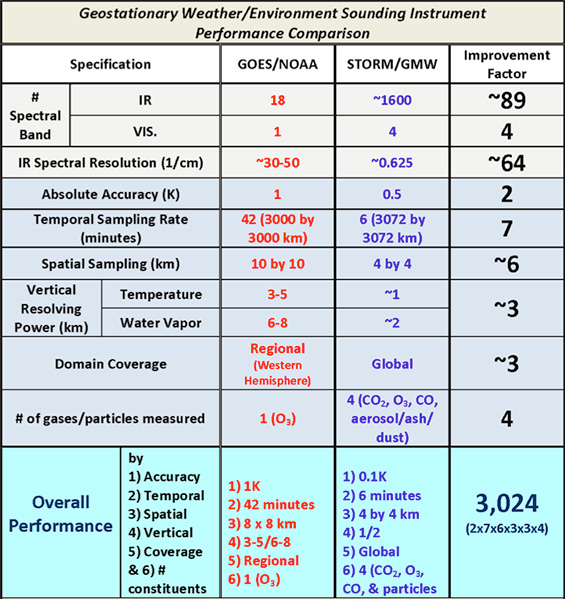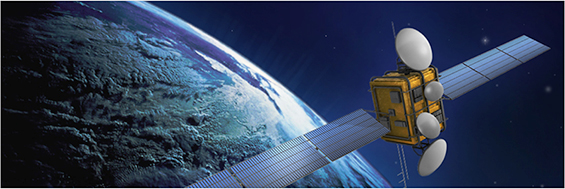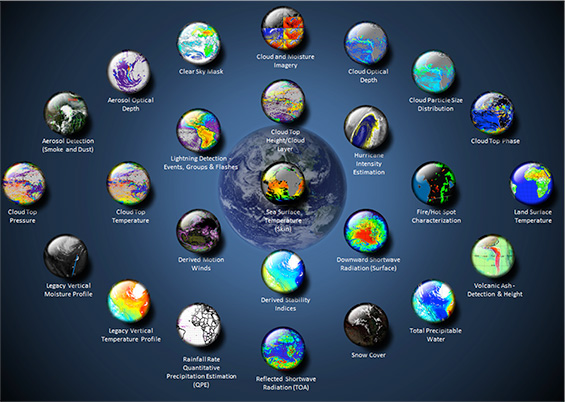SSEC Partners With GeoMetWatch On STORM Program
The University of Wisconsin-Madison, Space Science and Engineering Center (UW-SSEC) has entered into a partnership to be the prime contractor for data processing associated with GeoMetWatch’s first hyperspectral Sounding and Tracking Observatory for Regional Meteorology (STORM) sounder, a series of six geostationary satellite instruments that will collect critical weather data not currently available to weather forecasters.
The STORM system is based on the Geosynchronous Imaging Fourier Transform Spectrometer (GIFTS) that was developed from 1999 to 2006 under the NASA New Millennium Program administered by NASA with key technical leadership from Utah State University and UW-SSEC. Bill Smith and Allen Huang of UW-SSEC provided pioneering science and implementations techniques for GIFTS and will continue as key members of the STORM team.
GIFTS was originally meant to pave the way for a sounder on the new GOES-R spacecraft planned for launch in 2016. Budgetary issues cancelled the GIFTS program and the GOES-R sounder, leaving the GOES-R without the sensitivity to rapidly changing atmospheric stability that will enable advanced severe storm warnings from space.
GeoMetWatch, a private commercial venture that two years ago obtained a licensing agreement from the Department of Commerce to place hyperspectral instruments in six geostationary satellite slots around the world, has now announced its partnership with AsiaSat, a major satellite communications company. The partnership plans to launch its first STORM instrument in 2016, and GeoMetWatch will eventually launch a minimum of five more. Fabrication of the first STORM instrument has already begun at Utah State University’s Advanced Weather Systems Foundation (AWS) in North Logan, Utah.
“STORM will provide significantly earlier warning for severe weather and climate instability, and it will do so faster, more frequently and with finer detailed measurements than any capability in orbit today,” said David Crain, Chief Executive Officer of GeoMetWatch.
STORM is designed to make effective use of the key developments of the GIFTS program to minimize program risks. The goal of the STORM constellation is to improve the prediction of localized severe weather, provide more accurate tropical cyclone path forecasts, and use its unprecedented spatial and temporal resolution to more accurately pinpoint the location and onset of major storms.

GeoMetWatch STORM is designed to specifications that far exceed existing technology with more than three orders of magnitude (3,024 times) better measurement. Chart compiled by Allen Huang, SSEC.
“I view this as a very exciting opportunity for SSEC,” says Hank Revercomb, Director of SSEC. “This is a timely opportunity to apply SSEC’s expertise to help ease the global human- and societal-level disruptions posed by severe storms. This effort will produce a very valuable resource for greatly improving severe weather warnings and much more, and will thereby be a great asset to NOAA and to the world-wide mission of SSEC.”
Crain added, “We are very appreciative of our relationship with UW-SSEC, and recognize the significant contribution they will make to the success of our overall project. UW-SSEC has a truly unique capability in developing the science and operational algorithms for hyperspectral sensors like STORM as well as the processing, distribution and data center tools needed for a mission such as this. We truly look forward to our ongoing partnership.”
SSEC, the birthplace of Geostationary weather observing initiated by Professor Verner E Suomi, is the world leader in developing algorithms and software for processing the high-volume geostationary atmospheric data that will be collected by the STORM hyperspectral sounder.
“The plan is for SSEC to play similar roles it originally was to play for the GIFTS program,” Revercomb says, “namely responsibility for the Data Center and Data Processing, in addition to supplying calibration Blackbody systems and Testing/Engineering support. It is very exciting to see this hyperspectral technology effort brought back and set on the track to launch again.”


